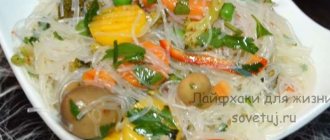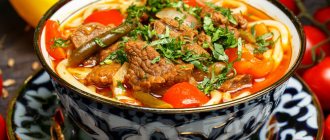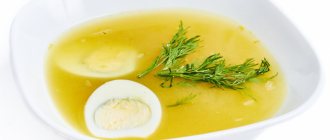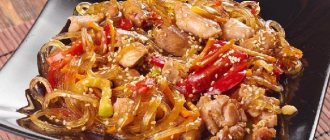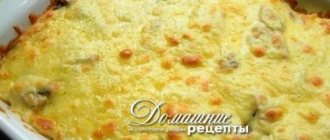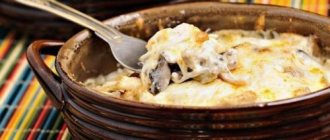Udon is a traditional Japanese long noodle made from wheat flour, often with ground buckwheat or beans added to the dough. This side dish in Japan is perhaps second only to rice in popularity. Noodles come in several types, but are traditionally considered thick. Color - white or light beige, structure - soft, elastic. Noodles are often eaten as a first course, in which case they are served together with broth, and its recipe varies depending on the region of the country - it can be meat, fish, mushroom, with different concentrations and different types of soy sauce. Udon is also served as a regular side dish - cold or warm, often in combination with shrimp, tofu, and green onions. Rice wine and soy sauce are used as a dressing.
Composition and calorie content of udon noodles
Pictured are udon noodles
Like any other noodles, Japanese noodles have considerable energy value, and therefore those who adhere to a dietary nutrition protocol need to add them to their diet with caution.
Calorie content of udon noodles is 356 kcal per 100 g, of which:
- Proteins - 11.35 g;
- Fats - 0.81 g;
- Carbohydrates - 74.1 g;
- Water - 9.21 g;
- Ash - 4.54 g.
The product is, first of all, a source of carbohydrates, which indicates the need to monitor the amount of its consumption for people who are trying to lose weight. It is important for everyone to maintain a balanced diet, and there are already too many carbohydrates in the modern menu.
The vitamin composition of udon is quite limited, since the product is made from white wheat flour - highly processed, and, nevertheless, B vitamins are still contained in the Japanese side dish.
Vitamins per 100 g:
- Vitamin B1, thiamine - 0.1 mg
- Vitamin B3, niacin - 0.9 mg;
- Vitamin B5, pantothenic acid - 0.5 mg;
- Vitamin B6, pyridoxine - 0.1 mcg;
- Vitamin B9, folate - 14 mcg.
Minerals per 100 g:
- Calcium - 23 mg;
- Iron - 1.3 mg;
- Magnesium - 28 mg;
- Phosphorus - 80 mg;
- Potassium - 164 mg;
- Sodium - 1840 mg;
- Zinc - 0.5 mg;
- Copper - 0.1 mg;
- Manganese - 0.5 mg;
- Selenium - 8.3 mg.
It is worth noting that although the product does not hold a record for the content of vitamins and minerals in its composition, it makes an important contribution to the overall nutrient balance.
- See also the composition and calorie content of egg noodles
Menu
Share on social networks:
TECHNICAL AND TECHNOLOGICAL CARD No. Udon noodles with chicken and vegetables, serving restaurant Card validity start date from
1 AREA OF USE
This technical and technological map was developed in accordance with GOST 31987-2012 and applies to the Udon dish with chicken and vegetables produced by the restaurant
2. REQUIREMENTS FOR RAW MATERIALS
Food raw materials, food products and semi-finished products used to prepare this dish (product) comply with the requirements of current regulatory documents, hygienic requirements for the safety and nutritional value of food products, Uniform Sanitary Requirements, TR CU 021/2011, SanPiN 2.3.2.1078-01 and have documents about the quality and safety of the established sample.
3. RECIPE
Name of raw materials and products Unit. Consumption of raw materials and products per 1 time Gross \ Net
Chicken fillet s/r g 30,000 \30,000 Udon noodles p/f PA g 120,000 \120,000 Peeled onions s/r g 15,000 \15,000 Peeled carrots s/r g 15,000 \15,000 Peking cabbage s/r g 40,000 \40,000 Re ts Bulgarian p/ f g 15,000 \15,000 Eggplant sv g 16,500 \15,000 Zucchini g 16,500 \15,000 Champignons s/r g 15,000 \15,000 Garlic s/f g 5,000 \ 5,000 Extra table salt g 1,010 \ 1,000 Ground black pepper y g 0.202 \0.200 Green onion p/ f g 10,000 \10,000 Oyster sauce ml 20,600\ 20,000 Refined vegetable oil ml 16,800\ 15,000 Kikkoman soy sauce ml 5,050\ 5,000 Spices s/r pores 1,000\ 1,000
Yield (in grams): 240
4. PREPARATION TECHNOLOGY Udon noodles with chicken and vegetables, restaurant portion
“Boil the Udon noodles for 3-4 minutes until al dente. Place on a sieve. Cut the chicken fillet into strips (length 6 cm, thickness 0.5 cm). Cut the onion into 1/4 rings 5 mm thick, carrots into strips, cut zucchini and eggplants into thin strips 0.5 cm thick and 5 cm long. Champignons with plastic. Cut three types of bell pepper into 5 cm long strips.
Finely chop the garlic, Chinese cabbage (hard parts) into strips. Cut the green onion into “feathers” at an angle of 30º, 3-4 cm long. In a frying pan heated with oil, fry the vegetables in the following sequence, constantly tossing: carrots, onions, then bell pepper with garlic, eggplant and zucchini.
Then add chicken fillet, fry until cooked, season with salt and pepper, add oyster sauce and concentrated soy sauce, put the noodles in a frying pan with vegetables and meat, add green onions, stir, heat and place in a heated serving pan.”
5. REQUIREMENTS FOR DESIGN, SALE AND STORAGE Udon noodles with chicken and vegetables, restaurant portion
Serving: The dish is prepared according to the consumer’s order and used according to the recipe for the main dish. Shelf life and sales according to SanPin2.3.2.1324-03, SanPin2.3.6.1079-01
Note: the technological map was drawn up on the basis of a development report. According to physical and chemical indicators, it meets the requirements of GOST RF 50763-2007 “Culinary products sold to the public.” According to microbiological indicators, it complies with the requirements of SanPiN 2.3.2 1078-01 and the requirements of GOST of the Russian Federation.
6. QUALITY AND SAFETY INDICATORS Udon noodles with chicken and vegetables, restaurant portion
6.1 Organoleptic quality indicators: Appearance – Characteristic of the incoming components, without foreigners Color – Characteristic of the incoming components, without foreigners Taste and smell – Characteristic of the incoming components, without foreigners
6.2 Microbiological and physico-chemical indicators: According to microbiological and physico-chemical indicators, this dish meets the requirements of the technical regulations of the Customs Union “On the safety of food products” (TR CU 021/2011) as well as the requirements of SanPiN 2.3.2.1078-01, index 1.9. 15.13.
7. NUTRITIONAL VALUE OF A DISH (PRODUCT) FOR 1 time
Proteins, g Fats, g Carbohydrates, g Calories, kcal
10,278
16,265
12,613
237,947
Process engineer
Share on social networks:
Health benefits of Japanese udon noodles
When talking about the benefits of udon, it is very important to understand what specific type of noodles are on the plate. The first thing that is important is the cooking time indicated on the package. If the product is cooked for less than 8 minutes, this means that it belongs to simple carbohydrates, that is, it is made from soft varieties of wheat; if the readiness time is longer, then we are dealing with a complex carbohydrate from durum wheat. What's the difference? The fact is that simple carbohydrates actually do not provide any benefit to our body; they are not only poor in vitamin and mineral composition, but also cannot provide energy for a long time. Thus, only if we have a plate of “correct” noodles in front of us can we count on its benefits:
- Providing the body with energy . Complex carbohydrates are excellent “building blocks” on which our body’s energy plant can operate for a long time. They are indispensable at lunchtime, when he is already somewhat tired and needs a high-quality recharge in order to work effectively until the evening.
- Restoration of the body . Complex carbohydrates are also indispensable in an athlete’s diet; they help restore the body after training in general and muscles in particular.
- Normalization of metabolic processes . The positive effect on metabolism is due to the presence of B vitamins in the composition. And although their quantity is very small, the product makes an important contribution to the overall balance.
- Strengthening the skeletal system . The same can be said about the mineral composition of udon noodles: it is not a rich source of one or another micro- or macroelement, but still the product replenishes the body’s mineral reserves, which leads to strengthening bone tissue, teeth, and nails.
- Improved mood . Again, due to the presence of B vitamins in the composition, the quality of the nervous system is affected. However, the product has a positive effect on emotional well-being, perhaps not so much due to the content of these vitamins, but due to the introduction of novelty into the standard diet, and a varied and tasty diet is the key to a good mood.
Please note that udon can have an even greater positive effect on the body when it comes to noodles with the addition of one or another type of flour - ground buckwheat and beans can significantly enrich the composition.
Recipe for udon noodles with vegetables in teriyaki sauce
Want to learn how to cook a traditional version of the dish? Then prepare this recipe. I like the simplicity and speed: literally 20 minutes to prepare and you can serve. Garlic, black pepper and teriyaki sauce add a delicious aroma.
Prepare:
- 300 g udon noodles;
- 1 bell pepper;
- 1 medium carrot;
- 2 cloves of garlic;
- 2 tbsp. sesame seeds;
- 3 tbsp. teriyaki sauce;
- 1-2 tbsp. vegetable oil;
- salt and ground black pepper to taste.
Recipe:
1.
Cut the vegetables into thin strips. Peel and finely chop the garlic.
2.
Heat vegetable oil in a frying pan and fry the carrots until soft. Add the bell pepper, stir and continue to fry together for 3 minutes.
3.
Add the garlic to the vegetables, stir again and fry for another 1 minute. Keep on low heat until the liquid evaporates.
4.
Boil salted water in a saucepan, place the noodles in it and cook for 11 minutes. Place in a colander and let the water drain. Send it to the vegetables, pour in the teriyaki sauce, mix thoroughly and remove the pan from the heat.
Place on serving plates and sprinkle with sesame seeds. Serve hot. For lovers of Asian cuisine, I recommend trying or.
Contraindications and harms of udon
Japanese noodles are not the healthiest food product, but the potential harm of udon is minimal, of course, when present on the menu in reasonable quantities.
The product is made from wheat flour - an ingredient that is familiar to the diet of, perhaps, any person, that is, when tasting a Japanese dish, you should not be afraid of individual intolerance or allergies. That is why the side dish can be safely given to children, pregnant women, lactating women, and people with allergies. Of course, if there is no other Asian exotic in it.
However, any product made from white flour has a high glycemic index, which means that Japanese noodles should not be eaten if you have diabetes or a predisposition to this disease.
In addition, try to complement your udon plate with foods with high nutrient density - healthy vegetables, spices, complete protein.
Finally, it is worth saying that noodles contain gluten, which means they are prohibited for consumption by patients with celiac disease. However, since this protein, in general, is quite heavy for our body, we should try to limit the amount of it in everyone’s diet. Often, for autoimmune diseases and diseases of the digestive system, the therapeutic diet prohibits all gluten-containing products.
Note! If you buy instant udon, keep in mind that it contains almost no fiber, and therefore you must add foods rich in this nutrient to it, otherwise you can cause constipation.
How to cook udon at home?
The udon recipe is, in fact, simple and unpretentious: you only need three ingredients to prepare it - wheat flour, water and salt. However, you need to take into account that in Japan, special water is used for this - kansui, it is considered mineral and contains a large number of phosphates, due to which the noodles initially have a salty taste, and therefore a lot of additional salt is not added to the product.
In addition, there is a tradition of kneading the noodle dough with your feet, placing it in a special bag and walking until it reaches the desired consistency. It is worth noting that in our country such a tradition is unlikely to be understandable, because we treat the test very carefully and the need to stand on it can cause a very ambiguous reaction.
Despite such a simple recipe, each region of Japan manages to experiment with the dish in its own way. There are more than 30 noodle recipes.
The most popular types of udon noodles:
- Dangojiru - noodles are flat but thick, similar to dumplings. It is usually served with broth, and therefore, in fact, dangojiru in Russian is a soup with dumplings.
- Inaniwa is the thinnest udon, somewhat reminiscent of instant noodles. It is especially loved in the Akita region.
- Ise is a classic thick round noodle that is loved in Mie Prefecture.
- Kansai - has medium thickness, slightly flattened appearance, eaten in the region of the same name.
- Kishimen is flat, in the form of a “ribbon” of medium width. They love it in Nagoya.
- Sanuki - popular in the Kagawa region, it is harder than others, although it has a classic appearance.
- Suba is also a classic type of noodle, but it has an original recipe; vegetable ash is added to it, which enriches the properties of the product.
- Hoto - somewhat reminiscent of dangojira, wide flat noodles, traditionally served with pumpkin and vegetables. A specialty of Yamanashi Prefecture.
- Mimi - has an unusual ear shape and is popular in Togiti.
In general, the Japanese experiment as much as they can in udon noodle recipes, and it would seem that even such a simple product becomes multifaceted and interesting.
Thus, making udon at home is not at all difficult; you will need simple ingredients and there will be no strict limits regarding the shape and type of product, because the Japanese are confident that everyone can prepare the dish in their own way.
How to make your own udon noodles:
- Dissolve salt (1 tsp) in warm water (90 ml).
- Gradually add flour (200 g), stirring constantly. You can use only wheat flour, or you can replace some of it with any other flour; we remind you that traditionally bean or buckwheat is used as a supplement.
- When the dough becomes homogeneous, roll it into a ball, put it in a plastic bag and leave for half an hour. When closing the bag, try to control the flow of air; there should be a minimum amount of it in the bag.
- Knead the dough, roll it into a ball again and leave for 3 hours.
- Roll out the dough into a thin layer, sprinkle with starch, cut into strips of noodles, and place in a storage container. If the dough starts to stick, use additional starch.
The finished product can be immediately cooked for 5-10 minutes - depending on the type of flour and size, or you can freeze it, so it will be preserved for a long time. Please note that subsequently it is important to completely defrost the noodles before cooking.
Note! Be sure to follow the proportions of the ingredients, otherwise the desired consistency and real udon simply will not work.
- See also TOP 6 recipes for making udon noodles
How to cook udon with chicken and vegetables in a wok pan
Ingredients
- Chicken fillet – 270 g;
- Soy sauce – 50 ml;
- Japanese udon noodles – 100-120 g;
- Sesame seeds – 1 tsp;
- Sunflower oil – 2 tbsp;
- Young zucchini – 0.5 fruits;
- Carrot – 0.5 fruits;
- Fresh mushrooms – 80 g;
- Red bell pepper – 1 pc.;
- Onion – 1 small head;
- Chinese cabbage – 55 g;
- Starch – 3-4 tbsp;
- Salt - to taste;
- Garlic – 2-3 cloves.
How to make udon noodles with chicken in a wok
Preparing vegetables
- We wash our vegetables under running water, peel them, if there is any, cut off all excess and remove the core from the bell pepper.
- Wash the mushrooms thoroughly under running water and clean them.
- We chop clean prepared vegetables into cubes, except for cabbage and mushrooms, we chop them into beautiful shavings or medium cubes.
Cook udon in boiling water
- To cook noodles, you need to: put a pan on the stove, pour water into it and lightly salt the liquid.
- Throw the Japanese udon into boiling water and wait 6-7 minutes, stirring, until the product is completely cooked.
- We catch the finished noodles by passing the contents of the pan through a colander, and then rinse the udon.
Wash the chicken meat, cut it, bread it in starch
- Wash the chicken fillet with cool water, then dry the meat and cut into medium cubes.
- Bread the chicken in starch, thoroughly rolling the pieces in it.
- Place a wok pan on the stove, pour a little vegetable oil into it and heat the dishes thoroughly.
Fry chicken with vegetables in a wok pan
- Place the fillet on the bottom of a heated frying pan and quickly fry using a spatula.
- Next we put the mushrooms into the wok with the meat and quickly fry them, stirring.
- Add peppers and carrots, frying vegetables for about 4-5 minutes.
- Then add the remaining ingredients to the pan. Cook the dish for another 5 minutes.
- Add the garlic to the wok last. Mix the ingredients, wait 1-2 minutes and pour the pre-cooked noodles into the frying pan.
Stew udon with chicken and vegetables until done
- Season the dish with soy sauce and simmer over low heat for another couple of minutes, then turn off the heat and place the dish among portioned plates.
- Sprinkle sesame seeds on top of each portion of udon, and then treat your loved ones to exotic oriental cuisine.
And if you have hot and spicy lovers in your house, then you can season the noodles with chili pepper or even wasabi. Just add such ingredients carefully and gradually so as not to overdo it with spiciness.
If desired, before frying in a wok, chicken fillet can be briefly marinated in a marinade of soy sauce and pepper mixture - you will get a spicy and unusual dish with a bright taste and rich aroma.
Udon with chicken and vegetables is a recipe that will come in handy in any home, even where exotic Japanese cuisine is not tried very often. Such extraordinary noodles will delight you with both their taste and a whole range of useful minerals and vitamins.
Bon appetit!
Recipes for dishes with Japanese udon noodles
There are many classic dishes with Japanese side dishes: kake - hot noodles in broth, which is always served with green onions, tempura - udon with shrimp in batter, kare - a side dish in curry broth, yaki - fried udon in a special sauce, wakame - a dish with the same type of algae, chikara or the so-called power noodles, which are always eaten with fried rice cakes, zaru - cold noodles with nori, kijoyu - again, a cold side dish with soy sauce and citrus juice.
However, if you buy Japanese noodles, and by the way, you can do this today in any supermarket, you do not have to adhere to strict rules. How to prepare udon is up to you: feel free to experiment with the side dish or use one of these recipes:
- Hearty soup with oyster mushrooms and chicken . Prepare all the ingredients in advance: thinly slice fresh ginger (50 g), chicken fillet (400 g), oyster mushrooms (200 g), bell pepper (1 piece), finely chop garlic (4 cloves) and chili pepper (1 piece). Heat a wok, heat vegetable oil (50 ml), immediately throw in all the prepared ingredients, except the peppers, and fry until golden brown over high heat. Add soy sauce (50 ml), star anise (2 pieces), sweet and hot pepper, fry for a minute, add chicken broth (2 l), cook for 5 minutes. Boil udon (400 g) separately. Serve the soup with noodles, lemon juice and green onions to taste. It is also good to add an egg to this soup.
- Quick wok with shrimp . Boil udon (400 g) according to the instructions, drain in a colander. Break eggs (2 pieces) into a bowl, beat with soy sauce (70 ml), add finely chopped leeks (1 piece), shrimp (200 g), bean sprouts (1/4 cup), noodles. Heat a wok without oil, when smoke appears, pour in oil (2 tbsp), throw in cubes of chopped tofu (100 g) and fry it for a couple of minutes, then add the ingredients prepared in a bowl and fry for another 3-5 minutes. Place on plates, add peanuts and lemon juice to taste, and eat immediately.
- Simple vegan wok . Boil udon (100 g) according to the instructions on the package. In advance, cut the onion (1 piece) into thin half rings, carrots (1/2 piece) into strips, chop any greens to taste (1 bunch). Heat a wok, pour in vegetable oil (2 tbsp), quickly fry onions and carrots over high heat, add green beans (100 g) and herbs. Cook for a couple more minutes, pour in soy sauce (3 tbsp), add noodles, mix everything well, turn off the heat.
- Eggplant stew . Cut into large cubes the eggplant (200 g), finely dice the onion (150 g), garlic (30 g), fresh ginger root (20 g). Fry the eggplants in melted butter in a frying pan. Heat the oil in a thick-bottomed saucepan, add the onion and ginger, add the garlic a little later, and pour in the mirin (65 ml). When it has evaporated slightly, add the eggplants and pour in the chicken broth (170 ml). Simmer for 5-10 minutes, add tomatoes in their own juice (300 g), kombu seaweed (7 g), tuna flakes (7 g), cook for another 10-15 minutes. Add dried chili pepper (to taste), soy sauce (17 g), chopped green onions (10 g), salt to taste if necessary. Take another eggplant (300 g), cut into large pieces, fry in melted butter until tender, add salt and pepper, add soy sauce (17 g) and sesame oil (5 g), add chopped green onions (10 g). Boil udon (500 g) according to the instructions on the package, season with soy sauce (25 g) and sesame oil (5 g). Place the noodles in a bowl, top with eggplant and tomato stew, and finally coarsely fried eggplants separately. You can add green onions and Japanese furikake seasoning to taste.
- Salad with broccoli and miso paste . Boil udon (250 g) according to the instructions, drain in a colander. Separately cook broccoli (200 g) and green peas (200 g), combine the ingredients, sprinkle with lemon juice. Peel the cucumber (1 piece) and cut into thin rings. Also cut the onion (1 piece) into thin rings and pour over boiling water. Dissolve miso paste (2 tbsp) in water (2 tbsp), add rice vinegar (1 tbsp). Combine all ingredients with noodles and dressing.
As you can see, the side dish goes well with a variety of products, and therefore you can easily find a use for it in your menu, be it classic or vegetarian.
- See also recipes for making udon noodles with chicken and vegetables
Recipe for udon with chicken and vegetables
Ingredients
- Japanese udon noodles – 200 g + –
- Bell pepper - 1 pc. + —
- Carrots - 1 pc. + —
- Chicken fillet – 200 g + –
- Onion – 1 head + –
- Green onions – 2-3 feathers + –
- Garlic – 2-3 cloves + –
- Ground ginger - 0.5 tsp. + —
- Soy sauce - 2 tsp. + —
Add everything
to the shopping list
Remove everything
from the shopping list Shopping list
How to cook udon with chicken and vegetables
Preparing and cutting vegetables for the dish
- We rinse the carrots under running water, and then chop them into beautiful shavings, about 4 mm long.
- We wash the bell pepper and cut out the core with the seeds, then also chop it into strips.
- We wash the chicken fillet under the tap and dry it. Chop the meat into medium-sized cubes.
- We wash the onion, remove the husk from the root crop, cut it into halves, and then randomly chop it.
- We crush the garlic or pass it through a press.
- Place a thick-bottomed pan on the fire and pour in vegetable oil.
- Fry the onion and garlic until golden brown, stirring with a spatula.
- Add carrots, bell peppers and green onions, continuing to stir and fry the ingredients.
Cooking chicken with vegetables in a saucepan
- Next, fry the chicken, turning the fillet pieces over so that they brown well.
- When the chicken acquires a beautiful golden color, add seasonings: salted soy sauce and grated ginger.
- We also pour purified water into the pan - about half a glass.
- Cover the saucepan with a lid and cook the meat over low heat, remembering to stir it.
- We wait until our sauce in the chicken becomes thick enough. Then turn off the heat and remove the saucepan with meat from the heat.
Cook the udon until done
- Now let's prepare the udon noodles: put another saucepan with boiling salted water on the fire, where we put our Japanese noodles for 4-6 minutes.
- After this, strain the noodles using a colander and rinse them with clean water. We wait for the excess moisture to drain.
- Pour the prepared udon into the pan with the meat and vegetables and mix the dish thoroughly.
This dish is always eaten hot, and therefore udon with chicken and vegetables should be served immediately after lunch is ready.
